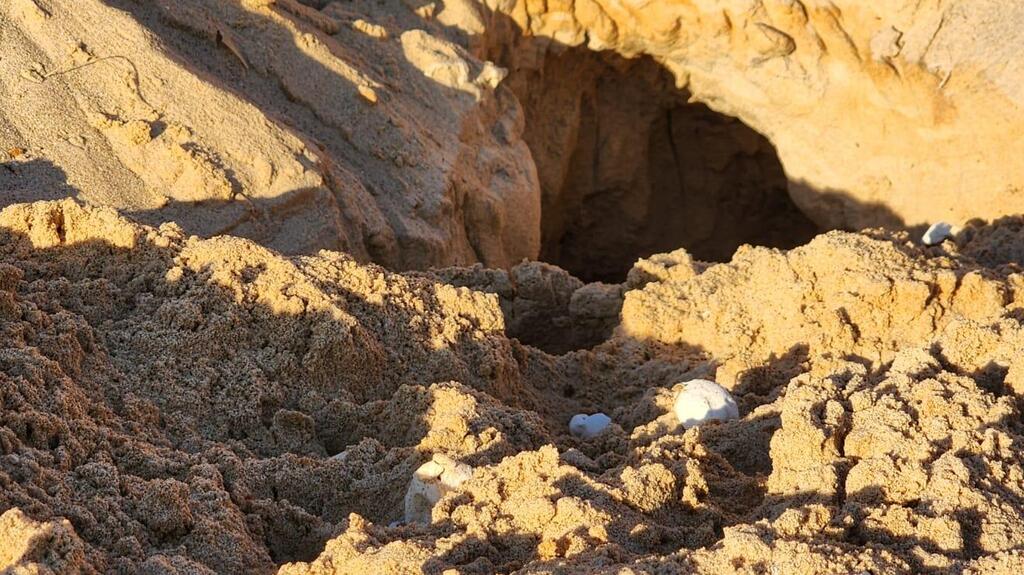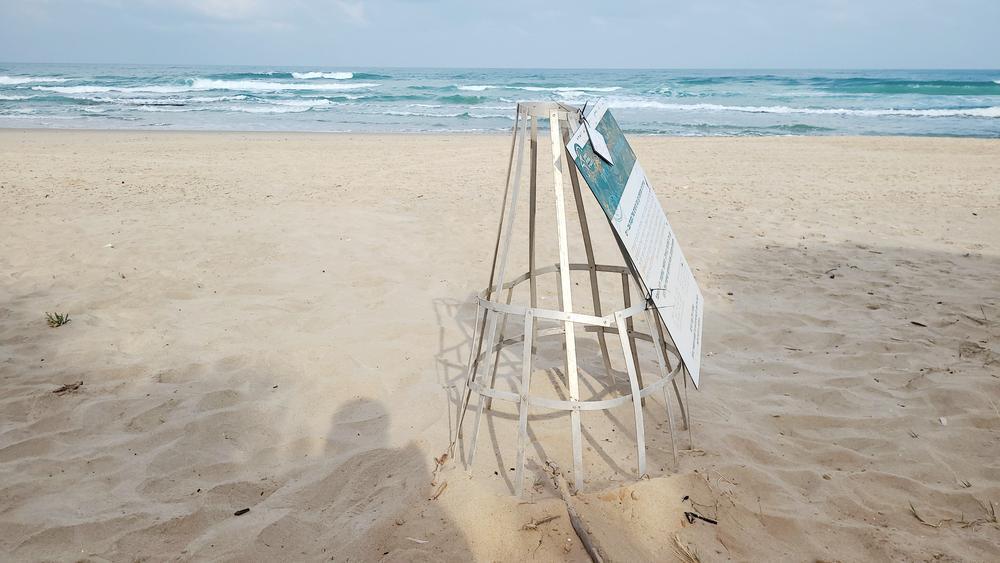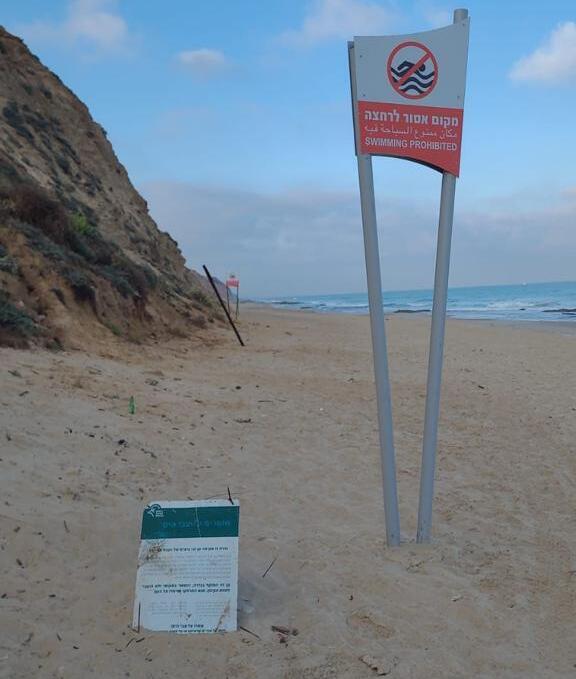Getting your Trinity Audio player ready...
The sea turtles' nesting season in Israel has gotten off on the wrong foot: A man destroyed a fence placed around a nest containing dozens of sea turtle eggs that were laid in the Gador Beach Nature Reserve, near Hadera. As a result, dogs ate all the eggs in the nest just days before the hatchlings were supposed to break out of their eggs and make their way to the sea.
Read more:
Inspectors from the Nature and Parks Authority, who were patrolling the beach in the nature reserve, came across the sad sight of the destroyed nest.
3 View gallery


The remains of the turtle nest in the Gador Beach Nature Reserve
(Photo: Netzer Elimelech, Israel Nature and Parks Authority)
"This was the first nest in the nature reserve, which is supposed to protect wildlife," said Guy Levian, head of the Marine Unit at the Nature and Parks Authority. "A loggerhead sea turtle emerged on May 21 to lay its first clutch of eggs in the reserve this season. Unfortunately, despite the protection placed on the ground, people damaged the nest and even allowed dogs off-leash into the nature reserve."
"We have many volunteers who help us protect the sea turtles, and I am grateful to them for reporting this incident to us. We have been eagerly waiting for the nest to hatch every day, but unfortunately, we will not see this through," he added.
3 View gallery


The fence placed around the nest
(Photo: Netzer Elimelech, Israel Nature and Parks Authority)
3 View gallery


The place where the eggs were laid
(Photo: Netzer Elimelech, Israel Nature and Parks Authority)
Loggerhead sea turtles are one of two species of sea turtles that nest on the shores of the Mediterranean Sea in Israel. It is adapted for swimming with limbs resembling flippers, it has a large head, and its upper shell is made up of shades of brown to reddish-brown. When mature, its upper shell reaches about a meter in length, and it weighs around 100 kg.
Loggerhead sea turtles are philopatric, which means that the females return to the same beach where they hatched to lay their eggs. In Israel, males and females mate in relatively shallow waters near the shore between the months of February and July. Female loggerheads lay eggs an average of three times a season, every two years or more.
Between May and August, females come ashore at night, dig a hole in the sand, and lay around 80 eggs. They then cover the nest with sand and return to the sea. After about two months, the hatchlings emerge from the nests and make their way to the sea.
As part of the efforts by the Nature and Parks Authority to conserve the population of loggerhead sea turtles, since the 1980s, most nests are relocated to protected hatching sites on various beaches in the country. The affected nest in this case was left in place as it is located in a nature reserve.
Even though loggerhead sea turtles are now protected by law, and it seems that the population size of the Mediterranean's loggerheads is increasing, threats such as bycatch, pollution, marine debris, vessel traffic and disturbance to nesting sites still pose risks to this species. The National Sea Turtle Rescue Center of the Nature and Parks Authority cares for injured and stranded sea turtles and conducts research for their conservation.
The Nature and Parks Authority makes significant efforts for the conservation of loggerhead sea turtles and urges the public to report injured or endangered sea turtles to their call center at *3639.

